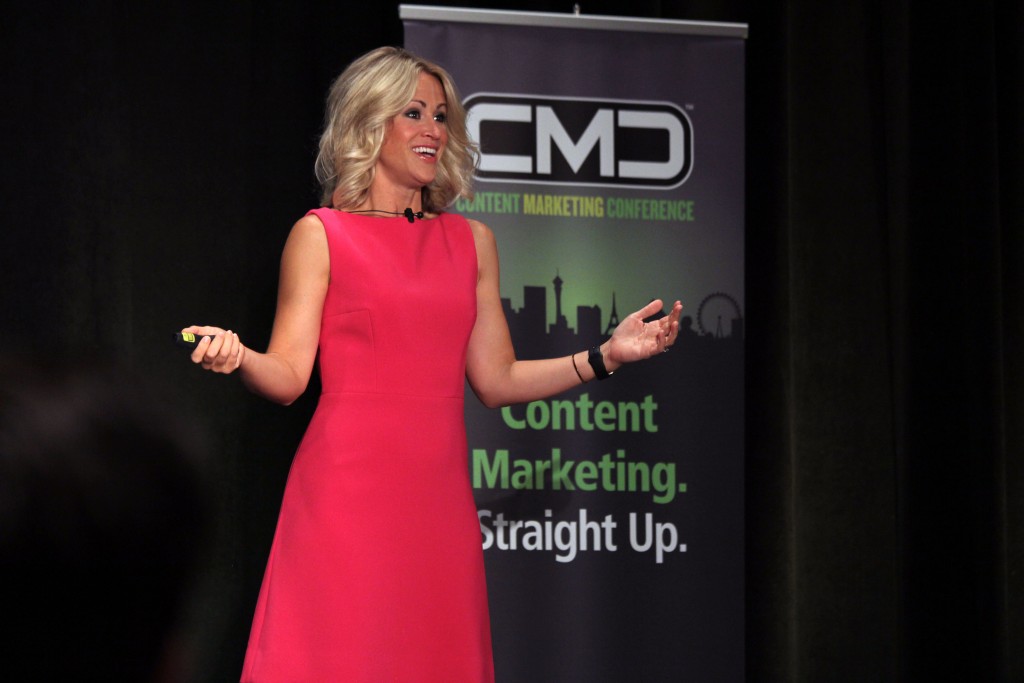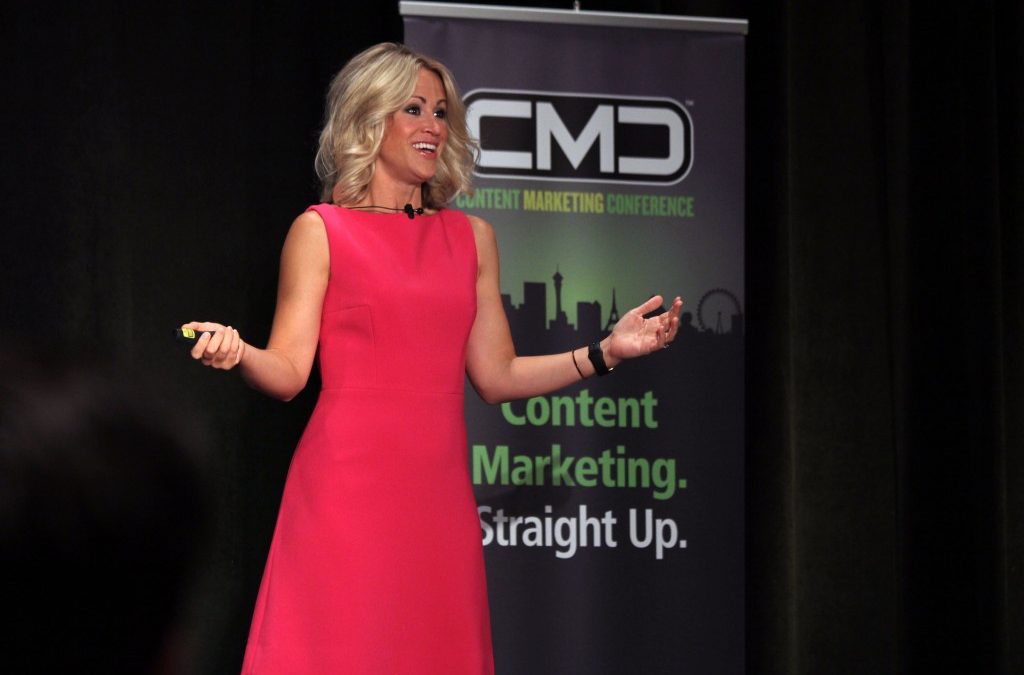Bright, bubbly, and by all appearances full of far more coffee than had been imbibed by yours truly (or, indeed, the entirety of the ballroom), Kindra Hall bounded on stage for her 9 AM CMC16 keynote on “The Irresistible Power of Strategic Storytelling” with similarly irresistible charm. Hall, an author and prolific public speaker, is known for her ability to build brands using her evocative and innovative approach to storytelling. The question is this: How can the rest of the world achieve similar levels of success using the Hall-approved pro-story methodology? Perhaps the best place to start is, as with any great story, at the beginning.
Why Tell Stories?
In the audience-driven world of content marketing, every action we, as businesses, take should be motivated by the desires of our clients. In other words, we deliver what our clients need, and in the process we hope they learn to need us – or at least to respect us or remember us enough to spend their hard-earned dollars accordingly. There’s even scientific proof of the power of storytelling: Neurologist Paul Zak recently discovered that good storytelling actually increases our levels of oxytocin, a neurochemical typically produced when we’re feeling kind or trusting, and cortisol, which increases our ability to focus and pay attention.
While introducing Hall, WriterAccess CEO Byron White mentioned the three three elements integral to any great presentation. Fittingly, Hall eventually expounded on all three:
Passion
Passion is how we convey a sense of urgency to our audience. If we don’t care deeply about whatever it is we’re talking about, why should anyone else? When we tell our brand story to potential or current consumers, we’re asking for something in exchange – initially we want their time, but eventually we want their patronage. We’re paying it forward by laying our own integrity on the line in the form of sincerity.
Stories
This is the actual narrative. Your presentation, be it a website, brochure, keynote speech, video, blog post, whatever it may be, it has to go somewhere. A beginning, a middle, and end, a reason for anyone to get hooked and stay the course – it’s all required or your brand’s journey will be a rambling ruin, just like your lackluster story. Come up with a great tale and you’re winning. After all, humans are attracted to stories – why else is it that the Super Bowl commercials we remember are the ones with lost Clydesdales finding their way home or a couple of teenagers following every movement Cindy Crawford makes only to have it revealed that what they were really drooling over was an ice cold can of Pepsi?
Emotional Connection
My mother once told me that if you want to make an impact, you’d better make your audience laugh or cry. Kindra Hall undoubtedly subscribes to the same general adage. She and my mother both believe in the staying power of emotion; all things being equal, someone will pick the option that resonates the deepest or makes them feel the most. And sometimes, emotion is powerful enough to outweigh lower prices or previous loyalty. A smile or tear can move movements as easily as it can sell software.
Finding Your Story
So, how do you condense all the things you want to say into a focused brand story? Hall recommends writing down the following:
- List of values
- List of objections
- List of your clients’ transformations
- List of first
- When your why was born
- The stories happening around you
Keep eliminating non-essential entries until you boil your initial brainstorm down to its most impactful essence. Then, start your story with the thing that happened in the middle. Give your audience a chance to care, then rewind and tell them how you got to that point before showing them where it’s all going. In its final, polished form, your story is made up of a Normal, an Explosion, and a New Normal.
Ultimately, the strength of your brand is equal to how badly people want to tell your story. Remember the Super Bowl examples above? The companies who win during the big game are not those who paid the most for their time slots but rather the brands whose videos are being passed around on social media the next day. Fight through the white noise and demand to be recognized.
The Biggest Mistakes in Storytelling
Hall told the story (in combined video and oratory styles, this time) of a handbag brand started by two sisters who had lost their parents. The girls were still teenagers when tragedy hit, and they were struck by a desire to do something that would both commemorate their parents and make them proud. Their purse company was born, and later, so was their brand story in the form of a video. The problem? The first version alluded to the story while the second came out and said it.
Your brand story is not:
- A mission statement, tagline, or slogan
- A history lesson
- A list
- A rant
- Vague, high-level principles or a theory
In storytelling, there are no prized for subtlety, no trophies for best attempts, and no conversions on the back of wishy-washy web content. This is your opportunity to tell your audience what you want them to think, feel, know, or do. Think BIG – you can always make go smaller later. And don’t forget the breadcrumbs; each tidbit you drop in your content is another way your audience is going to find their way back to you. For the sake of your brand, make sure your story is full of them.

